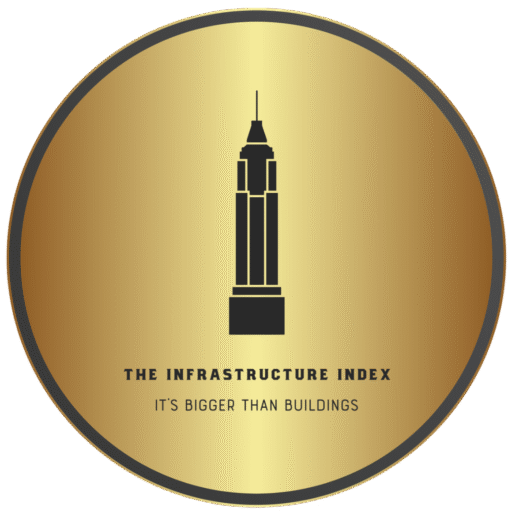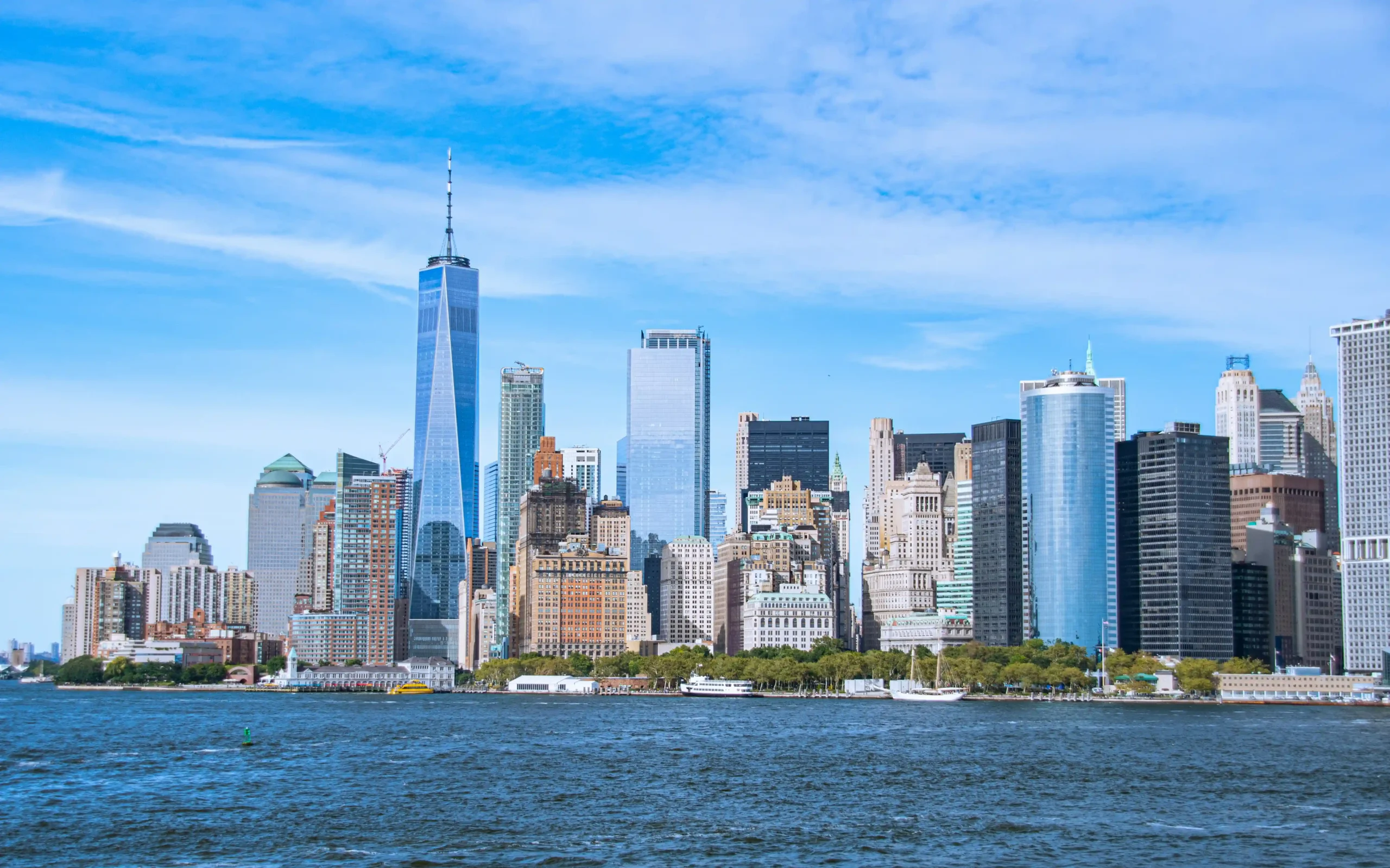The One World Trade Center, also known as One WTC or the Freedom Tower, has defined Lower Manhattan’s skyline since its completion in 2014. Symbolizing America’s resilience following the horrific events on September 11, 2001. The 1,776‑ft (541.3 m) height was chosen deliberately to evoke the Declaration of Independence, reclaiming the city’s architectural presence. Since its completion, it has remained the tallest building in both the United States and the Western Hemisphere. While several new supertall skyscrapers have risen in New York City, none have surpassed One World Trade Center’s height.
Politically and culturally, the tower transcends its role as a commercial building. It’s a monument of national recovery, blending safety-driven engineering, symbolic geometry, and civic architecture. Its crystalline structure—honouring the fallen Twin Towers while looking toward the future—makes it both an office hub and a memorial emblem.
Tower Stats
- Height to architectural tip: 1,776 ft / 541.3 m — symbolic of the year 1776
- Highest occupied floor: 1,268 ft / 386.5 m — where the highest office floor sits
- Floors above ground: 104 (plus 5 basement levels)
- Observation decks: Floors 100–102 at One World Observatory (opened May 2015)
- Construction period: Began in April 2006, Officially opened in November 2014
- Architect: David Childs of Skidmore, Owings & Merrill, in collaboration with Daniel Libeskind’s master plan
- Cost: Estimated $3.9 billion USD
- Structural material: Reinforced concrete base and core with high‑performance glass-and-steel curtain wall panel system
- Floor area: 3.5 million sq ft / 325,000 m²
Architecture and Design
Designed to capture light, security, and symbolism, One WTC fuses an octagonal midsection rising from a square base. This multi-faceted geometric form alludes to both the Twin Towers and the architectural lineage of New York skyscrapers. The base’s thick concrete walls—clad in steel and glass fins—make it visually lighter and structurally resilient after post‑9/11 security advisories. The lobby features a triple‑height Carrara marble interior anchored by ONE: Union of the Senses, a 90-foot-long mural by José Parlá celebrating the resilience of New York City.
Observation Decks
The One World Observatory, occupying floors 100 to 102, offers 360-degree panoramic views of Manhattan, the Empire State Building, the Hudson River, New York Harbour, and beyond. On a clear day, visibility can extend for more than 50 miles. High-speed Thyssen Krupp elevators, among the fastest in the Western Hemisphere, transport visitors to the top in under 60 seconds, with immersive LED panels showing a time-lapse of New York’s skyline development throughout the past.
At the top, interactive exhibits like City Pulse offer guided insights into the city’s neighbourhoods, while the Sky Portal lets guests stand on a glass disc with a live video feed of the streets directly below. Opened in May 2015, the observatory has become one of New York’s most popular attractions, drawing millions of visitors each year.
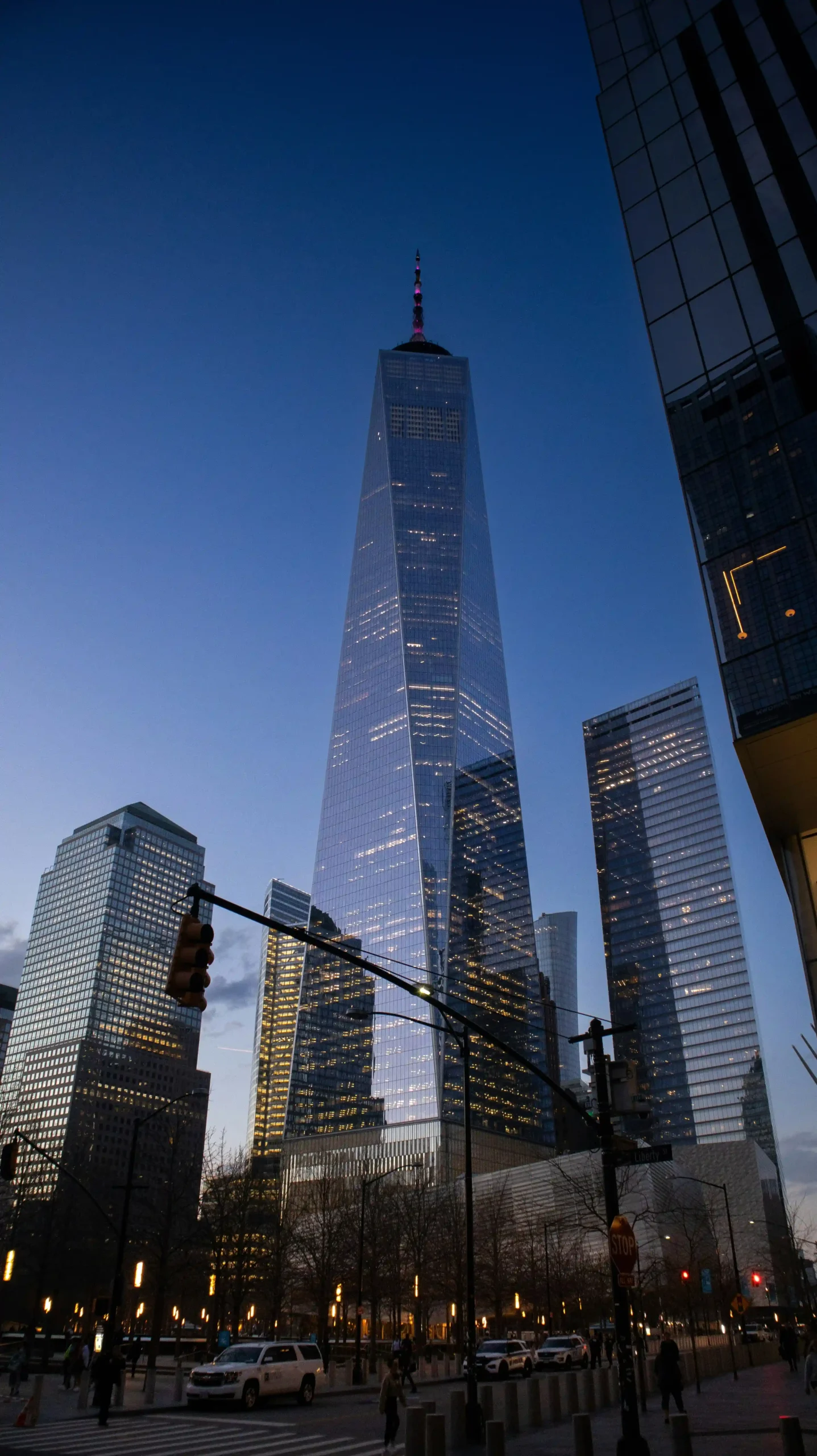
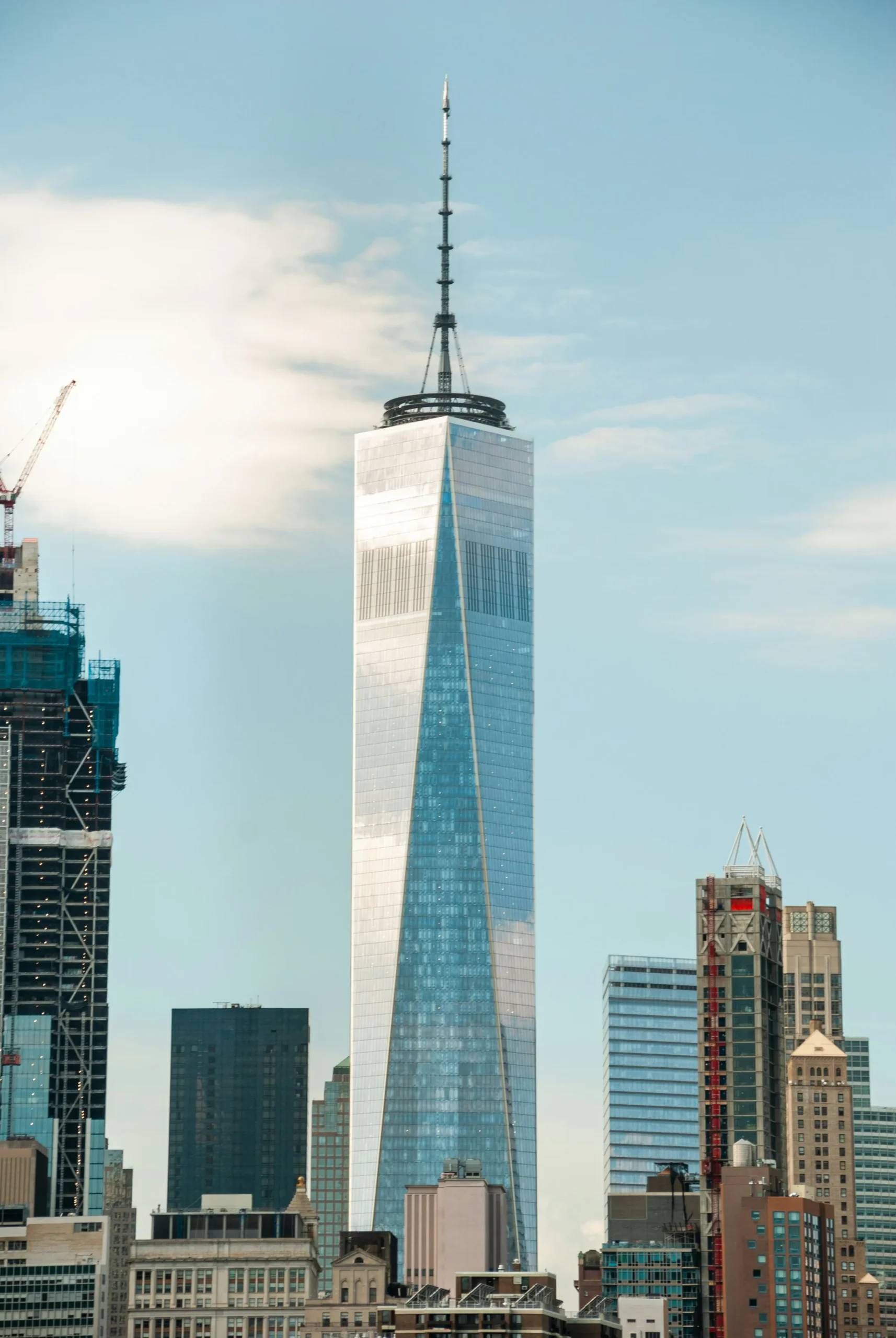

Thank you, Photographers! David Vives, Julian Myles, Michael van Gorkum on Unsplash
Commercial Tenants and Use
Primarily an office tower, One WTC houses a wide range of tenants, notably including Condé Nast, Wunderkind, Carta, and GroundTruth. As of early 2025, the building opened its top two floors (89–90) for leasing—the highest office space in the Western Hemisphere—asking up to $160/sq ft in a trend-signalling revival for Lower Manhattan.
Sustainability and Urban Role
One World Trade Center is the tallest LEED‑certified building in the Western Hemisphere, earning a Gold rating for its sustainable design. Features include a high‑performance glass façade, energy‑efficient mechanical systems, water recycling that cuts usage by over 40 percent, and construction materials with significant recycled content. It also anchors a revitalized Lower Manhattan, connecting directly to the Oculus, the 9/11 Memorial & Museum, the Perelman Performing Arts Center, and Liberty Park.
Construction Challenges
Construction of One World Trade Center commenced on April 27, 2006, following a period of design and funding challenges. These issues were resolved in April 2006, allowing work to proceed. Excavation and utility relocation began shortly thereafter, with controlled blasts used to remove bedrock and prepare the site for the tower’s foundations. The building topped out in May 2013 and officially opened to tenants on November 3, 2014.
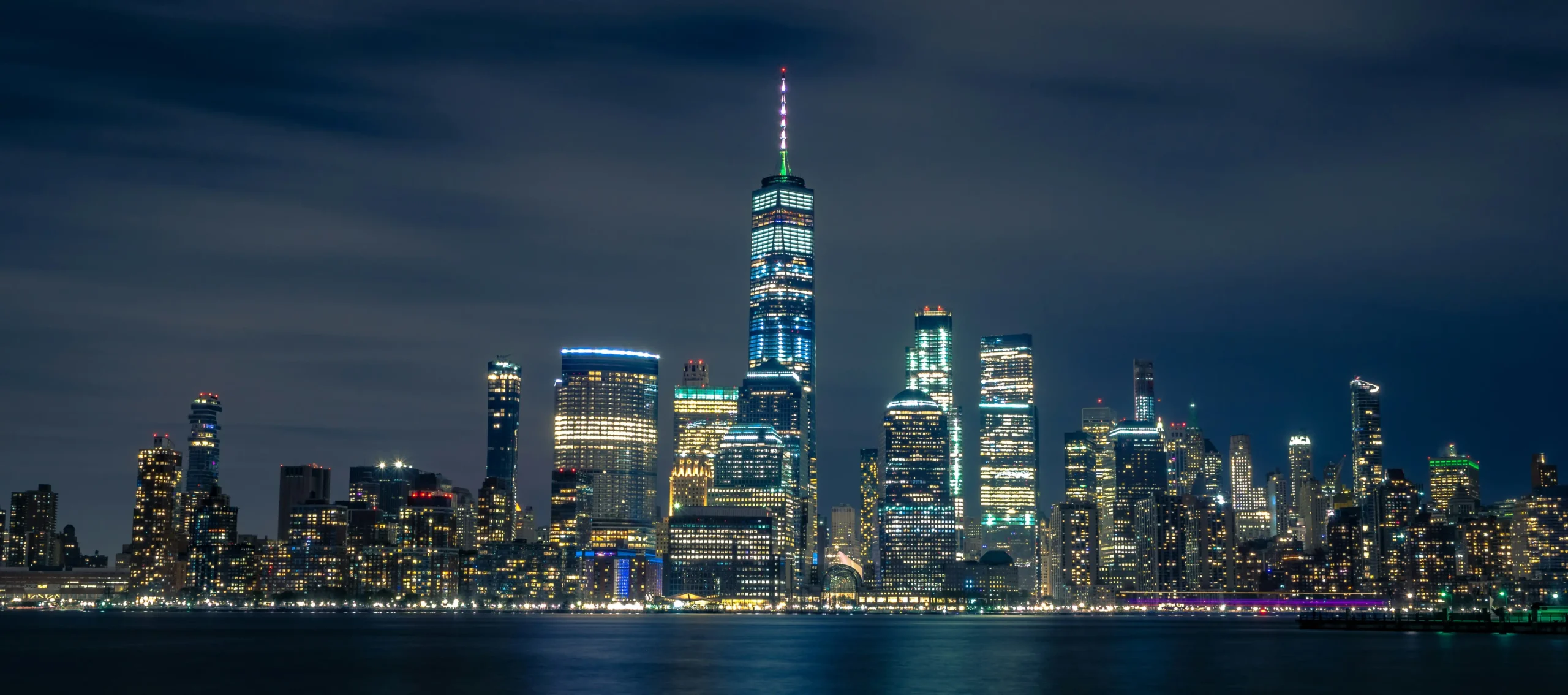
Photo by Andreas Niendorf on Unsplash
Global Recognition and Impact
Embodying renewal and national resolve, One World Trade Center has become an icon of modern architecture. It ranks as the tallest building in the Western Hemisphere and seventh globally. Its rebuilding process demonstrated architectural resilience and inspired a new wave of supertall office design guided by cultural meaning and safety-first engineering standards.
Fun Facts
- The spire adds 408 ft / 124 m to the building’s top, reaching the symbolic height of 1,776 ft. It consists of 18 steel sections, shipped from Montreal and assembled atop the tower in late 2012 and early 2013. Once those sections and three communication rings were installed, the building was officially recognized as the tallest in the Western Hemisphere.
- The structure uses high-strength reinforced concrete core and perimeter steel frame with up to 28-inch-thick concrete walls in stairwells and the central core, making it one of the safest office buildings globally—engineered to exceed post‑9/11 safety codes
- The foundations reach about 70 feet below street level to bedrock, anchored with massive reinforced concrete footings.
- Over 10,000 tonnes of steel beams and columns used in the tower’s perimeter structure were produced at ArcelorMittal’s Differdange facility in Luxembourg—a significant portion of the total structural steel used in the project
Cultural Legacy
One World Trade Center stands not merely as an office high-rise, but as a symbol of collective memory, resolve, and urban transformation. Its towering form bridges the legacy of losing the Twin Towers with a forward-facing skyline built on architectural dignity and civic pride.
